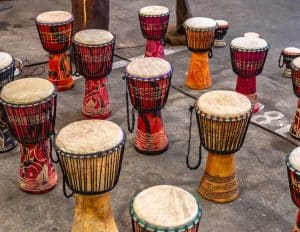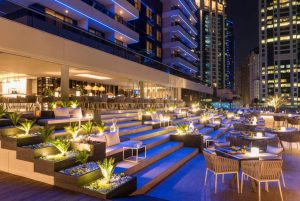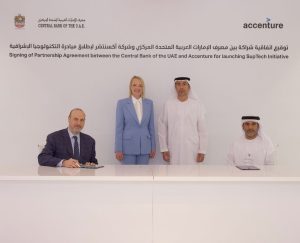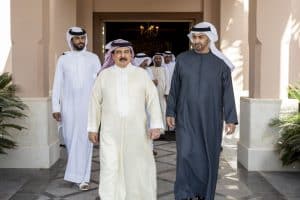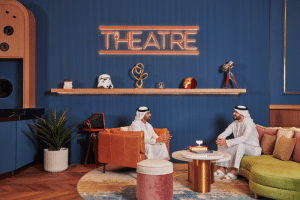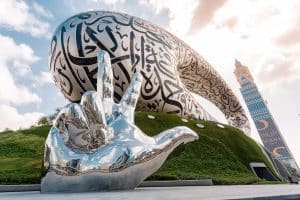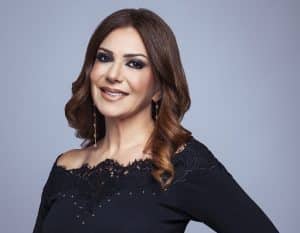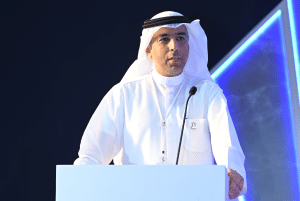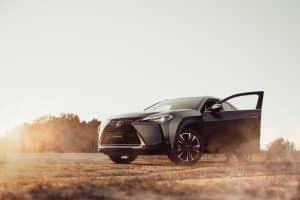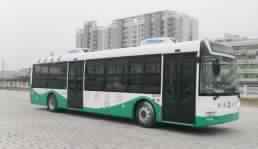
The Roads and Transport Authority (RTA) announced that it will shortly embark on the trial run of electric buses (powered only by electricity supplied by rechargeable batteries) where the battery can be recharged up to 80% in less than 30 minutes and the bus can cover up to 200 km with a full battery at a speed of 100 km per hour. The RTA will coordinate with the Dubai Electricity and Water Authority (DEWA) about future steps as regarads providing the infrastructure of electric vehicles.
Mattar Al Tayer, Chairman of the Board and Executive Director of the RTA , said: “This step is in line with the initiative launched by His Highness Sheikh Mohammed bin Rashid Al Maktoum, Vice-President and Prime Minister of the UAE and Ruler of Dubai, themed (Green Economy for a Sustainable Development) aimed at fostering a green economy in the UAE in view of the importance of power for humans and various ingredients of development projects. The initiatives also concords with the power and low carbon strategy pursued by the Government of Dubai with the objective of making Dubai a role model in the efficient power consumption, and curbing carbon emissions.
“The RTA will embark on the pilot operation of electric buses to assess the associated environmental benefits, measure the rate of reduced carbon emissions, identify the distance covered by the bus following each battery recharge process in addition to other parameters such as the bus speed, prescribed battery life span, ability to cope with the climatic conditions of the UAE particularly during summer, engine efficiency, and maintenance costs among others. In the light of these assessments, the RTA will decide on the next step to be taken. We recall that the RTA was the first entity in the region that embarked on a trial run of hybrid vehicles (operated by fuel and electricity) as part of the Dubai Taxi fleet in 2008,” explained Al Tayer.
“The RTA strongly supports efforts made by the Supreme Council of Energy to achieve Dubai’s Integrated Energy Strategy 2030. This year the RTA has carried out 32 energy conservation initiatives and 8 green economy support initiatives. These initiatives, which are expected to achieve savings of about AED 17 million, covered various RTA ‘s sectors and agencies, thus contributed to saving power consumption saved in Dubai Metro stations and railway, reducing water consumption, improving road lighting efficiency by using energy-efficient LED lighting, cutting down bus diesel consumption, and slashing taxi fuel consumption in addition to reducing carbon dioxide emissions in 2013 by 41% compared to 2012,” elaborated Al Tayer.
Environment Preservation Al Tayer stated that since inception, the RTA had been keen to ensure that all its projects and mass transport systems were eco-friendly. When constructing and operating the Dubai metro , RTA’s largest and most vital mass transport project, the RTA capitalized on the latest technology in the rail industry to ensure that this project would become environment-friendly in view of the huge amount of energy required to operate trains and stations. Therefore, right from the design phase of Dubai metro project, the RTA has been keen on ensuring saving power consumption to the maximum, where accurate and comprehensive specifications had been developed in various parts of the project.
Since inception, the energy project launched by the RTA focused on identifying intensive power-using components; namely electrical stations, rail system, cooling system and the metro stations systems. The project focused on achieving the intended targets starting from the minute design details, and using technologies and systems that need lower quantities of electrical power, yet have the capacity to yield high performance rates.
The power-saving project in the Dubai Metro reflected on cutting electrical consumption, and accordingly the costs of the metro operations dropped directly as reflected in the amount of electrical consumption; which in turn curbed the emission of carbon dioxide in the power generation plants of the Dubai Electricity and Water Authority (DEWA) .
The idea of the power-saving project, which is represented in using the latest solutions and technologies in trains that contribute to reducing power consumption, is built around the following key elements: Using electric power generated from the operation of the brakes system during the stoppage process.
Upgrading the high voltage of the main power grid from 11 to 33 kilovolt instead of the 11 kilovolt locally used by DEWA .
Providing air-conditioning for the metro stations from central cooling districts which have high benefits compared to the ordinary air-conditioning system.
Using the automated control system to synchronize the movement of trains; thus ensuring the optimal utilization of power generated at the first point.
Commitment to using highly-efficient electro-mechanical devices and using an integrated automatic control environment system to rationalize energy in stations.
The electric power project in Dubai Metro is characterized by several innovative features including: 1. Implementing an integrated electric power grid of 132/33 KV with a capacity of 120 mega volt amperes per station. This network contains 3 key stations using high-pressure of 33 KV for the first time to replace the 11 KV locally used in Dubai.
2. Implementing a sophisticated automate control system with driverless train operation technologies that communicate with the train devices through wireless network where a computer system is used to control and monitor movement of trains.
3. Using central cooling plants to provide air conditioning for the 47 stations on the Red and Green lines.
4. At the stations’ level, an environmental control system has been implemented to control the electro-mechanical system in an automated and economical manner, including special lighting devices and escalators as such system helps to rationalize the energy used in the stations.
Hybrid Vehicles In June 2008, the RTA initiated the pilot operation of 10 hybrid environment-friendly vehicles of Chevrolet (Tahoe and Malibu brands) powered by fuel and electricity. During the pilot period, the RTA measured the ability of hybrid vehicles’ batteries to withstand the excessive heat of the region, lifetime of batteries and the percentage of fuel saving made. The RTA also tentatively used a number of hybrid vehicles of Toyota brand and results of this pilot operation showed that test vehicles covered more than 550 thousand kilometers without experiencing failures or major maintenance issues in major components. Fuel efficiency improvement amounted to 33 per cent, and carbon dioxide emissions dropped by 33 per cent as well. For instance the normal vehicle needs about 12? liters of petrol to cover 100 km, while the hybrid vehicle needs around 8? liters to travel over the same distance. CO2 emissions of the normal vehicle are estimated as 182 kg per day, whereas CO2 emissions generated by the hybrid vehicle measure about 121 kg per day.
Environment-Friendly Buses The RTA has mapped out the guidelines and polices and implemented a host of programs and procedures capable of ensuring environmental sustainability and curbing the negative impacts generated by the movement of public buses. A general policy has been developed for conserving natural resources where a system for managing the environment at the corporate level has been developed. This system outlines various environmental activities of the entity, how to curb the adverse impacts of pollutants as well as the means of conserving natural resources, protecting the environment, and sustaining the development. It also defines the mechanisms of coping with wastes and emissions resulting from the activities of the entity and means of safeguarding against environmental pollution and means of mitigating it. It also catered to protecting the health of all employees as well as the community and environment from the potential hazards resulting from various activities of organizations which might have direct or indirect negative impact on the health and environment.
Steps have been taken to curb air pollutants resulting from the operation of public buses and abras such as sulfur and nitrogen oxides, hydrocarbons and carbon monoxide through designing, constructing and operating seven electric traditional abras, and using low sulfur diesel (50 ppm), whereas the fuel used at the local markets has sulfur content ten times of the fuel used in RTA public buses; which in turn is released in a form of environment-polluting emissions. The aging fleet of public buses has been replaced by buses compatible to Euro IV- V specifications, and the RTA embarked on using engines fitted with tools to curb nitrogen oxides emissions (selective catalyst Reduction- SCR), and engines fitted with techniques for curbing hydrocarbon and carbon monoxide emissions. These initiatives contributed to minimizing hydrocarbon and carbon monoxide emissions generated by transit means where the amount of carbon monoxide emitted by a private vehicle user (in case of being compatible with Euro 4 specifications at best) is about six times of the counterpart using public buses, and two-folds the amount of hydrocarbon of the counterpart using RTA buses.
CNG-Powered Abras In May 2007, the RTA , in cooperation with Emirates Gas Company, launched the pilot operation of three abras powered by compressed natural gas (CNG) instead of diesel as part of the keen attention of the RTA to improve and upgrade marine transport service using traditional abras for shuttling between the two banks of the Dubai Creek.
Powering abras by CNG project has multiple benefits that span economic, environmental, security and safety aspects. Considering the environmental impact, the project will contribute to cutting environmental pollution caused by the rising columns of smoke generated by diesel-operated abra engines by 66%. It also reduces emissions of harmful gases such as carbon monoxide and dioxide from abra exhausts, and reduces engines noise. Using environment-friendly systems is part of the key objectives set in the Dubai Government Strategic Plan and RTA Strategic Plan. From an economic perspective, the project contributes to slashing fuel costs by 30%, i.e. around one million dirham annually, and expands the lifetime of the engine, compared to diesel-operated abras, as it is lead-free.
In July 2012, the RTA launched the Energy Bus; which is one of RTA ‘s initiatives rolled out in response to the call of HH Sheikh Mohammed bin Rashid Al Maktoum, Vice-President and Prime Minister of the UAE and Ruler of Dubai, marking the launch of the Green Economy initiative.
The Green Bus applies the latest green technologies in public transport industry, and the initiative is considered amongst the pioneering projects in the Middle East besides fitting well with RTA ‘s vision of providing Safe and Smooth Transport for All. This initiative has been undertaken in partnership with S. S. Lootah Group; a leader in the green and clean technology applications.
The Green Bus uses Biodiesel B05; which contains 5% of recycled edible oil, and this small percentage is capable of cutting carbon emissions by as much as 78%. The bus also uses solar power for powering internal lights and uses LED power-saving lights. The green bus has tyres manufactured using recycled tyres, seat covers made of recyclable materials, and floors made of an organic environment-friendly material.
Source : WAM News Agency for United Arab Emirates


